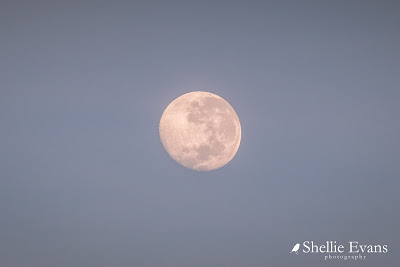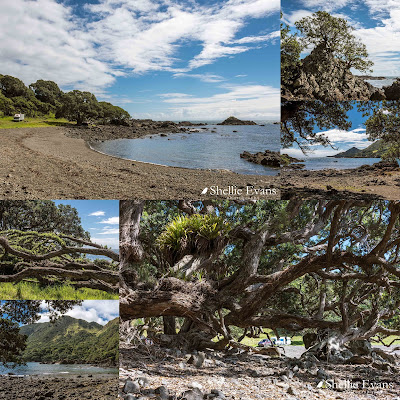Catch-up
One of our 'rules' while living on the road is to not de-camp during a long holiday weekend. In fact if anything we err on the side of caution, arriving 2-3 days before the weekend so we have a good site and are settled in before the masses arrive. And there we stay put and if we do move on after the weekend we wait a couple of days before pulling out.
We broke our rule Easter weekend. We won't do that again in a hurry.
After four days camped at Moreporks Nest in Te Araroa, Easter Saturday and with a hint of itchy feet, we thought we might as well head over the top and down into the Eastern Bay of Plenty for the rest of the long weekend. We were the only ones left and it didn't look like we'd have any company for the rest of the weekend. I had a few camps in mind that were on the beach or at least had sea views and, well, we hadn't seen too many people on the road. All our camping sites so far had been either empty or near empty so it shouldn't be too hard to find a spot for the next few nights, should it? Famous last words.
Our first stop was for lunch at a very busy Waihau Bay where the tiny settlement was buzzing with holiday makers enjoying the fantastic weather.
I've had a soft spot for Waihau Bay ever since watching the film 'Boy', the general store (below, second down on the right) featured in the movie; it's where Boy tries to impress the girls with his Michael Jackson moves.
We were lucky enough to find one empty boat trailer park that we could back into and have a quick lunch before anyone turned up to claim it. Boats were arriving home from a fishing competition and there were a few worried looks and cross words when MPI (Fisheries Officers) met them at the top of the ramp.
Our next stop is just a few kilometers south at one of the most photographed churches in New Zealand.
The historic Raukokore Anglican Church is over 100 years old and was built in 1894. It sits on a promontory of land surrounded by a rocky shore and exposed to the prevailing salt laden westerlies.
I also have a soft spot for this church; it's the subject of the very first photo I sold 6-7 years ago. I photographed the church on our road trip around the East Coast back in 2011 and I sold it to a guy who saw it in the photo sharing website Flickr. He wanted a canvas of the church for his wall, he had fond memories of the church from his surfing days in the area.
Only in NZ; I wonder where else in the world you might find a similar sign inside a church!
Back on the road we were starting to get a little worried about finding a place to stay for the night. It had already been noted that the Waihau Bay Holiday Park and the small camping reserve next to the Waihau Bay Hotel were both full to overflowing.
I had the Maraehako Camp- which is about half way between Waihau and Te Kaha- marked down as a first option. Photos I'd seen suggested the camp was more relaxed camping site right on the beach with large stand of pohutukawa trees and a stream running through it. Unfortunately the 'No Vacancy, Camp Full' sign was out as we slowed to turn into the gateway. We carried on down the coast.
Campers were spilling out over the confines of the freedom camping reserve at Te Kaha. Although we did see a couple of narrow areas we could have carefully slotted ourselves into but frankly, we didn't feel like crashing someone else's happy holiday scene. A little further on the Te Kaha Holiday Park was also a hive of activity.
There was one more freedom camping area at Omaio to check before a run of holiday parks on the lead into Opotiki, there were also a couple of NZMCA CAPS, but based on what we'd seen so far they were likely to be full too.
We weren't too happy with the narrow road and gravel track up into the freedom camping area at Hoani Waititi Reserve in Omaio but at least there was plenty of space available. The ground was very undulating and the grass knee high and very thick so it took several attempts to find a level site. Three Traillight motorhomes came in not long after us, they also finding it hard to find a level spot so we all ended up parked haphazardly in the middle of the reserve.
Other campers lined the cliff edge overlooking the sea, I say overlooking but they couldn't see a thing because of the mass of trees also lining the cliff. There are several steep tracks down to the water and rocks below which could be accessed at low tide. The water view in the photo below was taken from the Omaio Cemetery which is in the corner of the reserve. It did us for the night, and we were grateful to find something in the end, but I wouldn't be racing back to stay there again.
Bringing our East Coast wanderings to an abrupt end, we headed through to the NZMCA Park in Opotiki the next morning. Brilliant weather, the long Easter holiday weekend and hundreds of holidaymakers had foiled our attempt to explore the Eastern Bay of Plenty coastline. We'll return and explore that section at a more leisurely pace sometime in the future.
And while the Opotiki Park is another great asset for the Association and a good park for members, after the last few weeks of remote camp sites and seeing very few people, we suddenly felt hemmed in by a 'concrete jungle'.
We took a Sunday (Easter Sunday) drive along the coast and around the Ohiwa Harbour where there were many more people enjoying the sunshine; here at the Te Ahiaua Reserve the freedom camping area was overflowing again and there were many day trippers picnicking, swimming and gathering cockles.
We drove out onto Ohiwa Beach near the estuary outlet where the familiar sight of Moutohora Island, more commonly known as Whale Island, greeted us across the water...
...and still more people were out enjoying their leisure activities and gathering shellfish. It really was a cracker of a weekend and for many, their last chance to relax and catch the summer sun before winter arrives.
The next morning we headed off again, I just couldn't do another day at the Opotiki Park and being the last day of the holiday weekend, I was sure that we'd be able to find a spot at the Matata DOC Camp as campers pulled out and headed for home.
And sure enough the camp had a number of sites available, the manager saying it had been wall to wall campers all weekend with not one site spare. Many of them were leaving or still in the process of leaving as we arrived. We found a good spot along the edge of the wetland that's behind the camp and parked so we could bird watch out the lounge window.
One of the many magnificent beaches that stretch for miles along the Bay of Plenty coastline is just over the sand dunes alongside the camp. That's Whale Island again, it's now to the east of us.
Surf casting is a popular and productive pastime right along this coast.
I hadn't been able to get many sunrises since we left Waipiro Bay over on the East Coast, we'd either been parked behind large hills or in trees so I was up early to check the position of the sun here at Matata. My luck was in, it rose at the far end of the beach so I was able to include the sea and Whale Island in the shot.
I wasn't the only one up and about on the beach so early, a quad bike roared along the beach ahead of me, the red tail light causing me a few photo issues until he turned it off. I thought it was a fisherman until I zoomed in to see he had a kayak on the back...
...which he dragged into the waves before paddling off out into the bay. All was forgiven, it was a good photo-bomb afterall.
Once the fiery colours drained from the sky I headed back to the van, catching the pink hue of a new day...
...and a full moon still high in the sky.
We'd booked into Matata for one night but ended up staying three which proved to be a good antidote after our initial disappointment at having to finishing our East Coast exploring early. And it was a good place to gather our wits; next port of call- Mt Maunganui & school holidays!































































